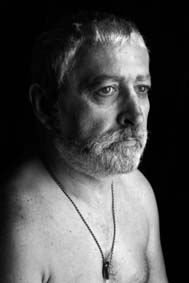
Until next February the 29th, Picassent’s prison hosts the exhibition ‘Nusos. Gent del Casal de la Pau’. This exhibition, organized by UV, shows Casal de la Pau residents’ profiles through 32 portraits. The exhibition, which was already shown last year at cultural centre La Nau, moves now to the penitentiary facilities. Universitat de València has been collaboratin with this institution in the organization of workshops to bring culture closer to inmates.
Since its creation, in 1972, Casal de la Pau association is devoted to look after inmates and former inmates in an extreme circumstance of vulnerability and social defencelessness. It is located in Valencia’s centre and it hosts 20 persons from all the Spanish land: inmates with a leave and under a 3 grade regime, former inmates and other persons being part of a hosting programme for people released due to illness. It is also a day centre with workshops and different activities. The association has more than seventy people working: 15 professional employees and many volunteers.
The lawyer, Juan Molpeceres, in charge of the law service of the association for more than a decade, is the author of the exhibition. Through a whole year, he took pictures of the programme’s people in order to ‘look at them differently, from closeness and understanding.’ He wanted ‘to show the beauty of their bodies. A beauty outside social standards, but which is materialized in their bodies through the marks they have suffered: hardships, excesses... A life of contrasts, generally a hard life, marking physically and forging the inside.’
Each of these lives is reflected on the pictures, which are filled with tattoos, scars... marks which could be the ‘knots’ (referring to the exhibition’s title in Valencian nusos) conditioning life. That is where the exhibition’s title comes from. Most of the pictures are faces which allow guessing different past traces, but there is also one chest, one back, one foot and one hand, all with marks, scars and tattoos. The past times of these people being uprooted and marginalized is sensed throughout the exhibition.
Last update: 31 de january de 2012 07:51.
News release



















